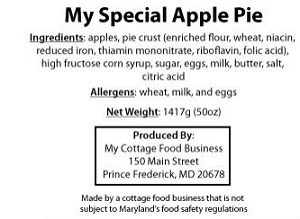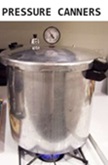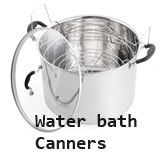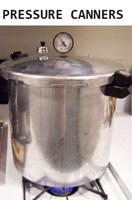
Looking for Nebraska Cottage Food Laws and Regulations: How to sell your homemade foods in Nebraska in 2025? Scroll down this page and follow the links. And if you bring home some fruit or vegetables and want to can, freeze, make jam, salsa or pickles, see this page for simple, reliable, illustrated canning, freezing or preserving directions. There are plenty of other related resources, click on the resources dropdown above. If you are having a hard time finding canning lids, I've used these, and they're a great price & ship in 2 days.
If you have questions or feedback, please let me know! There are affiliate links on this page. Read our disclosure policy to learn more.
Nebraska Cottage Food Laws and Regulations: How to sell your homemade foods in Nebraska
Nebraska Cottage Food Laws, Regulations and Facts
UPDATE for 2020: This law has just changed - we will be updating this page in the next few days!
Date of the enactment of the Nebraska cottage food law:
Nebraska's cottage food law ONLY allows sales at licensed
Farmer's Markets, which means that although certain foods can
be prepared in a private kitchen, they must be sold at a farmers'
market. There is a proposa (LB558 Cottage Food Legislation) l to make the state's laws more like
other states and allow sales direct to consumers (see
Nebraska NB558 status) but this is stuck in government limbo.
Which foods are subject to the Nebraska Cottage Food law?
What can be sold at a licensed Farmer's Market without a permit? A food that is not a time/temperature control for safety food such as:
- Fresh whole, uncut fruits and vegetables.
- Baked goods - rolls, breads, cookies, cupcakes, pies that do not have a dairy based filling, homemade granola product, etc. (A clearly visible placard is required at the sale location stating the food was prepared in a kitchen that is not inspected or licensed by the regulatory authority.)
- Traditional Jams and jellies. (A clearly visible placard is required at the sale location stating the food was prepared in a kitchen that is not inspected or licensed by the regulatory authority.)
- Eggs from local producers. An "Egg number" must be obtained from the Nebraska Department of Agriculture (at no charge). Eggs must be maintained as 45° F.
- Canned pop, and commercially packaged snack items, such as candy bars and chips
- Fresh or dried herbs.
If your food product does not meet the definition of a Cottage Food:
Don't give up. You may still be able to make and sell it commercially, through a startup approach.
First, you may be able to rent space in a local licensed commercial kitchen.
Second, if that doesn't work, you may be able to get a co-packer to make the food for you.
Which foods may NOT be sold?
What cannot be sold at a Farmer Market without a permit? You must have a permit to sell (these are examples, not an all-inclusive list):
- Home canned products such as meat, fruits, vegetables (green beans, tomatoes), pickles (all low acid canned foods)
- Salsa
- Raw (unpasteurized) milk and / or cheese and yogurt made from unpasteurized milk
- Meat, poultry, game meat
- Cheese
- Cream pies and other dairy based filling pies
- Butter type spreads (example: apple butter), jams and jellies that have jalapeno or other added ingredients; vegetable jellies (rhubarb jelly made with pectin, not gelatin, is allowed to be sold without a permit.)
- Homemade candies
Definitions:
- "home food
Licensing
 Labeling requirements
Labeling requirements
Cottage Food Production Operations must label all of their food products properly, which includes specified information on the label of each unit of food product offered or distributed for sale.
All processed packaged foods bear a label stating the
- name and address of the manufacturer/processor preparing the food,
- common name of the food,
- name of all the ingredients in the food in descending order of predominance by weight.
- the net weight of the food in English or metric units, and
- a statement that the product is prepared in a kitchen that is not subject to inspection by the department.
It is recommended that honey manufacturers/processors include this additional statement to their product label: "Honey is not recommended for infants less than twelve (12) months of age"; and
Depending on the size of your business, your label must comply with Federal label regulations and with the new nutritional labeling law. You can download a copy of the FDA Food Labeling Guide here it s an illustrated booklet that should answer all your questions.
Where may Cottage Food Production Operations sell the food products?
Cottage Food Products may only be sold at a licensed Farmer's Market.
Other requirements
Recommendations:
Get the Servsafe and CPFM Study Guide for Food Manager Certification in Paperback
And get the ServSafe Food Handler Guide
Beyond the requirements, common sense, good practices and reducing liability suggests you should do the following.
Training
Testing of pH
It's best to use a pH meter, properly calibrated on the day
used. I use this one, which is reliable and inexpensive.
And this pH meter is really good, but isn't always available.
Short-range paper
pH test strips, commonly known as litmus paper, may be used
instead, if the product normally has a pH of 4.0 or lower and the
paper's range includes a pH of 4.6.
Record-keeping is suggested
Keep a written record of every batch of product made for sale, including:
- Recipe, including procedures and ingredients
- Amount canned and sold
- Canning date
- Sale dates and locations
- Gross sales receipts
- Results of any pH test
Sanitation
Although inspections are not required, you should consider doing the following:
- Use clean equipment that has been effectively sanitized prior to use
- Clean work surfaces and then sanitize with bleach water before and after use
- Keep ingredients separate from other unprocessed foods
- Keep household pets out of the work area
- Keep walls and floors clean
- Have adequate lighting
- Keep window and door screens in good repair to keep insects out
- Wash hands frequently while working
- Consider annual testing of water if using a private well
Best Practices
- Allergens: Most state home baking
acts require an "ingredient statement" and/or an "allergen
listing" on the label of the bakery item for sale; but if your
state does not, you should anyway. The eight major food
allergens are
- milk,
- eggs,
- fish,
- crustacean shellfish,
- tree nuts,
- peanuts,
- wheat and
- soybean.
- Cross-allergenicity: There are also ingredients available, even flours, that can cause a cross-allergenicity. The American Academy of Allergy Asthma & Immunology explains cross-allergenicity as an allergic reaction when proteins in one substance are similar to the proteins found in another substance. For example, consumption of lupine flour may trigger an allergic reaction to peanuts, and cricket flour may trigger an allergic reaction to shellfish. Again, providing such information might be a beneficial marketing tool and help keep potential consumers safe.
- The 2 Hour/4 Hour Rule - Anyone
wishing to make and sell refrigerated bakery items should
remember to follow the "2 Hour/4 Hour Rule." This is a system
that can be implemented when potentially hazardous foods are out
of temperature control (temperatures greater than 45 degrees
Fahrenheit) during preparation, serving or display for sale. The
rule guidelines are as follows:
- If a potentially hazardous food has been out of temperature control for 2 hours or less, then it may continue to be used or be placed back in the refrigerator.
- If a potentially hazardous food has been out of temperature control for more than 2 hours but less than 4 hours, it needs to be used quickly or discarded.
- If a potentially hazardous food has been out of temperature control for more than 4 hours, it must be discarded.
More resources:
- FDA Food labeling information.
- Nebraska cottage foods summaryPDF
- Good to know (not a requirement): Guidelines for Determining Metric Equivalents of Household Measures (October 1, 1993)
- Massachusetts has a Food Processors Resource Manual
that is a practical guide for specialty food and start-up food
processors published by the Massachusetts Department of
Agricultural Resources. The marketing and practical tips can be
very useful to a cottage food kitchen in any state.
The chapters are available online and as a downloadable document
pdf format
Introduction
Starting Out
Production
Residential Kitchens: Questions and Answers
Developing a Business Plan
Label and Product Regulations
Label Design
Promotion
Distribution and Sales
Trade Shows
Using the Internet for Marketing
Questions? Contact Information:
Looking for canning equipment and supplies?
Water bath canner with a jar rack
Pressure canners for gas, electric and induction stoves: Presto 23Qt or T-fal 22Qt
Canning scoop (this one is PERFECT)
Ball Blue book (most recent version)
Jars: 8oz canning jars for jams
Find Other types of farms:
Farm markets and roadside stands
Road trips and camping resources
Local Honey, apiaries, beekeepers
Consumer fraud and scams information
Home canning supplies at the best prices on the internet!
Maple Syrup Farms, sugarworks, maple syrup festivals
Environmental information and resources
Farms For Your Event for birthday parties, weddings, receptions, business meetings, retreats, etc.
Festivals - local fruit and vegetable festivals
Get the
most recent version of
the Ball Blue Book
With this Presto 23 quart pressure canner and pressure cooker, you can "can" everything, fruits, vegetables, jams, jellies, salsa, applesauce, pickles, even meats, soups, stews. Model 01781

You can make jams, jellies, can fruit, applesauce, salsa and pickles with water bath canners, like this Granite Ware 12-Piece Canner Kit, Jar Rack, Blancher, Colander and 5 piece Canning Tool Set

